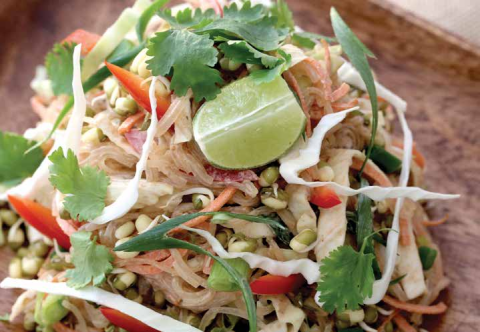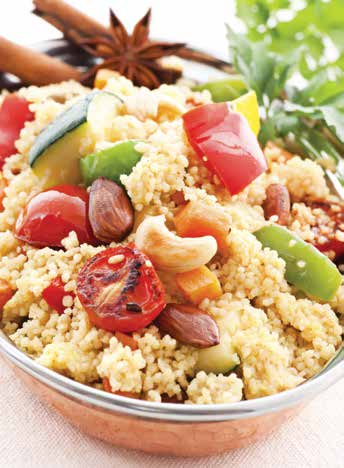In Grassroots Pantry’s large dining room, diners lit by candlelight dip into an organic tomato consommé and nibble on dehydrated chia crackers.



Why cutting kitchen carbon flourishes best in local soil
In Grassroots Pantry’s large dining room, diners lit by candlelight dip into an organic tomato consommé and nibble on dehydrated chia crackers. This isn’t a romantic Valentine’s dinner – although it probably was romantic for many. The plant-based restaurant in Hong Kong extinguished its burners and shut off its lights for Earth Hour on March 29, when it presented a raw dinner by candlelight. Earth Hour, and April’s Earth Day, are two ways for hotels, restaurants and resorts to assert an environmental commitment, but there are numerous other ways they are cutting kitchen carbon during the rest of the year.
Environmental organisation Carbon Care Asia has advised hotels brands like the Inter Continental group on producing low-carbon menus. Using locally grown fruit and vegetables and local and sustainable seafood, which means produce travels less, and replacing greenhouse gas emitting beef with more climate-friendly chicken are all examples. “Low carbon cooking methods means shorter cooking times in most cases – such as steaming and boiling instead of deep-frying,” adds Rosanna Wong, Carbon Care’s director.
Having a local view scores big when it comes to cutting down. Munduk Moding is a luxury spa and resort set on a coffee plantation in Bali where views from award-winning infinity pools overlook lush hillsides rich with rice fields and coffee trees. As a working plantation, the resort sources from its own coffee supply, an immediate energy saver. Elsewhere, water used in restaurant kitchens is filtered on-site, and the Indonesian and Asian dishes offered are almost all created from ingredients grown at the resort.
‘Grow your own’ equals a huge carbon offset. Gone are polluting air miles caused when food is flown in, and so too is the extra waste involved in its packaging. An added benefit to consumers is the improved taste of freshly grown seasonal produce. Bali is a front-runner when it comes to growing and supplying local, with a prominent Slow Food movement that sees local warungs, or cafes right up to luxury resorts showcasing menus bursting with foods sourced from the area.
In Thailand, resorts like the Mandarin Oriental’s Dhara Dhevi promote a strong ethical bias. In 2011 it began a self sufficiency programme that now sees its restaurants and staff dining rooms supplied with vegetables grown on its 60 acres of prime farmland. Anything over is given to local temples and an orphanage. Chiang Mai, where the property is located, is becoming a hotbed of organic farming, farmstays, locavore cafes and coffee producers; while in Hua Hin, American raw food impresario Michael Kinney’s culinary school at Six Senses’ Evason Hua Hin is his first opening in Asia and uses ingredients from the resort’s own veggie gardens.
Using locally grown fruit and vegetables means produce travels less

China is less recognised in this particular field. More often branded for health scares than earth love, places like Qing Cheng Mountain, in Sichuan, another property run by Six Senses, seem determined to turn this tainted image on its heel. Here you’ll find chef Rick Gonzalez roaming the property’s green grounds during planting season planning his menus, and on Sundays, guests and visitors mingle with local farmers, who come here to sell their own harvests at a weekly farmers market.
Qing Cheng’s kitchen garden currently provides 20 percent of its fresh produce needs, and by 2017 this should grow to 50 percent. Gonzalez is the first to admit the idea will take time to root. “This is a totally new concept to this area and it will always be a work in progress,” he says, but “local, on-site and in season makes sense. You are obtaining the best quality product for a very reasonable price.”
But what of urban locales where farmland is scarce? Here more than a sprinkling of creativity is needed to grow local. Rooftop farms have cropped up on train stations in Tokyo and skyscrapers in Singapore, where around 90 percent of food is imported.And in Hong Kong, where food consumed at origin hovers at about two and three percent, Evergreens Republic has launched Southeast Asia’s largest Aquaponics farm, where live fish feed an entire water-based organic ecosystem with enough nutrients to grow Asian greens, western kale and heirloom tomatoes.
Most Evergreens orders are sold directly to nearby households. “We say that if you order by 1pm, we will harvest your goods that afternoon and deliver it the next morning,” says farm manager Hugo Lam. Handy, since carbon cutting is best started at home. According to Kate Heyhoe, author of Cooking Green: Cutting Your Carbon Footprint in the Kitchen, there are numerous ways for home cooks to reduce energy.
From using faster cooking grains such as cous cous and bulgar, and rice sticks and bean thread noodles that require only soaking, to cooking with quick-heating convection ovens. Of course, avoiding any tech at all and eating local raw pretty much takes you to zero. Truly food for thought.
Cut Waste Not Flavour
This tasty kelp and almond satay salad from Mana! Raw in Hong Kong ticks multiple carboncutting boxes but never skimps on flavour.
Ingredients:
For the almond butter satay: 1 cup almond butter, 1/2 cup miso, 1.5 tbsp apple cider vinegar, 5 cloves garlic, 1/2 tbsp white vinegar, 1 tbsp tamari, A pinch of cayenne powder, 10ml water.
Method:
1. First blend all the satay butter ingredients together and refrigerate until needed.
2. Next, soak the noodles in water with one teaspoon of baking soda and massage to soften.
3. Combine the vegetables with the noodles and squeeze in lime juice. Toss with the satay
sauce, garnish with coriander and serve.
For the salad:
225g kelp noodles, 40g spiralised carrots, 90g shredded cabbage, 10g alfalfa sprouts, 10g spring onion chopped, 20g julienned red bell pepper, 1/4 lime, 15g roughly chopped coriander.























